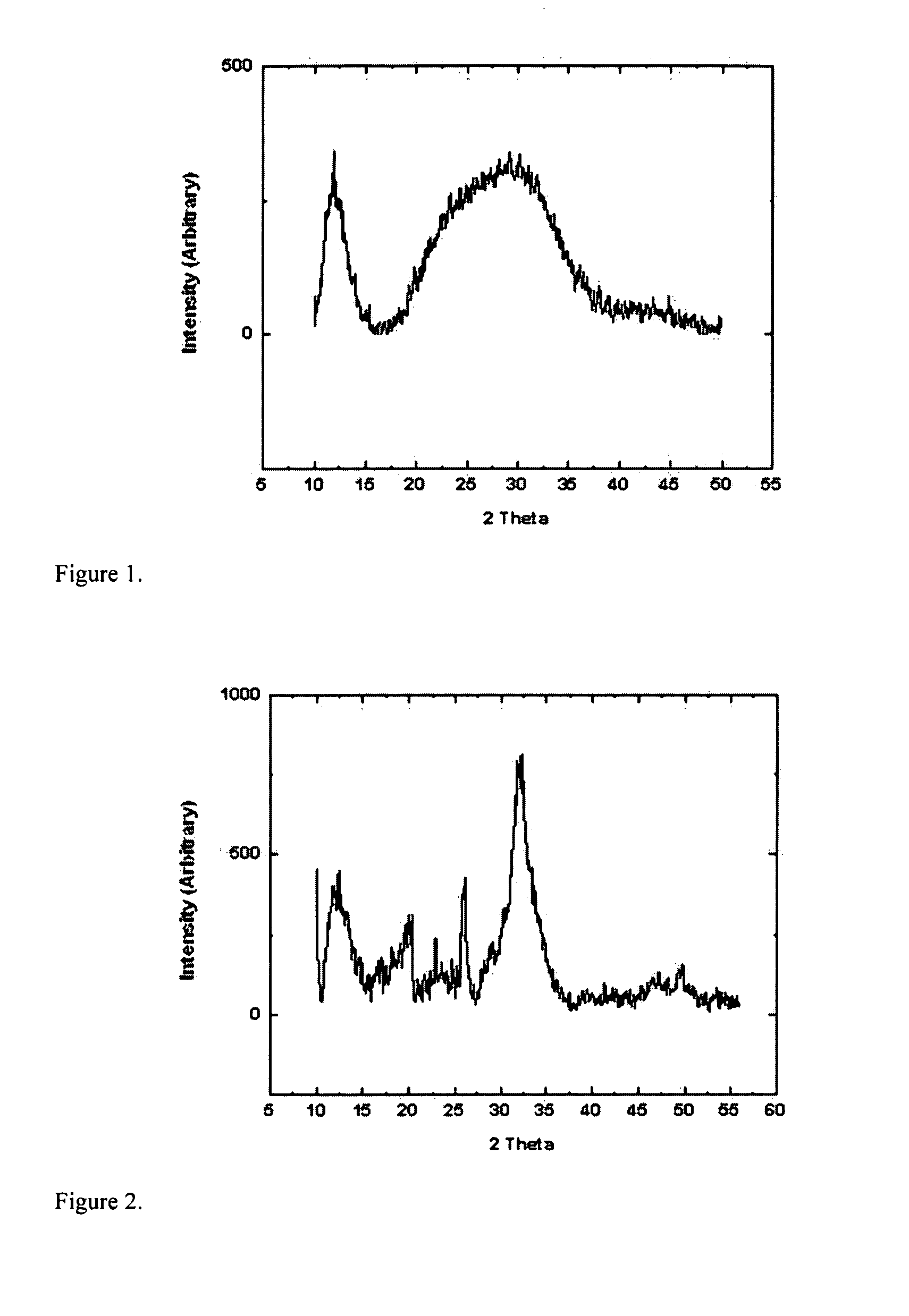Biomimetic hydroxyapatite composite materials and methods for the preparation thereof
a technology of hydroxyapatite and composite materials, which is applied in the direction of biocide, phosphorus oxyacids, drug compositions, etc., can solve the problems of low yield or long reaction time, and is not practical for implant manufacturing
- Summary
- Abstract
- Description
- Claims
- Application Information
AI Technical Summary
Problems solved by technology
Method used
Image
Examples
example 1
Solution Preparation
[0076]Calcium chloride dihydrate (99% Sigma Aldrich, St. Louis, Mo., CAS # 10035-04-8) and potassium phosphate tribasic monohydrate (Acros Organics, Belgium, CAS# 27176-10-9) were used as reactants for the synthesis of hydroxyapatite. First, a 1.0 molal calcium chloride solution was made using distilled, deionized water (“calcium solution”). Then, a 0.6 molal solution of potassium tribasic monohydrate was made using distilled, deionized water. The solution was divided in half (“phosphate solutions”) and acetic acid was added to one solution until the pH reached 7.4 (“neutralized solution”). The volume of acetic acid depends on total solution volume. For example, a 500 mL solution needs about 23 mL of glacial acetic acid.
example 2
Precipitation of Hydroxyapatite in Water
[0077]Equal volumes of calcium and phosphate solutions were measured out to create a calcium to phosphate ratio of 1.67 (final concentrations of ions if they were to remain in solution would be 0.5 m / 0.3 m). A 100 mL reaction required 50 mL of the calcium solution to be measured and poured into a beaker and 50 mL of the phosphate solution to be added. The mixture was agitated until and through a gelation stage. After the gel returned to solution, the resulting slurry was then allowed to age for 2 minutes. The resulting powder was then washed via centrifugation and freeze dried prior to characterization. For XRD sample preparation, a thin film of amorphous silicone grease was put on a glass slide and the powder was applied to the sticky surface. Excess was shaken off prior to analysis. FIG. 1 is an XRD diffraction pattern confirming the presence of HAp particles.
example 3
Precipitation of Hydroxyapatite in Water at a pH of 7.4
[0078]Proportional amounts of each of the three solutions (calcium, phosphate, and neutralized solution) were measured out to create a calcium to phosphate ratio of 1.67 and pH of 7.4 (final concentrations of ions if they were to remain in solution would be 0.5 m / 0.3 m). A 100 mL reaction required 50 mL of the calcium solution to be measured and poured into a beaker and 43 mL of the phosphate solution (unadjusted) to be added to the calcium solution followed by 7 mL of the pH adjusted solution. Agitation via stirring with a glass rod was then performed until the solution appeared completely mixed and white (a gelation is not seen). The slurry was not aged prior to deionized water washing via centrifugation and freeze drying. FIG. 2 is an XRD diffraction pattern confirming the presence of HAp particles in the resulting powder.
PUM
| Property | Measurement | Unit |
|---|---|---|
| temperature | aaaaa | aaaaa |
| temperature | aaaaa | aaaaa |
| pH | aaaaa | aaaaa |
Abstract
Description
Claims
Application Information
 Login to View More
Login to View More - R&D
- Intellectual Property
- Life Sciences
- Materials
- Tech Scout
- Unparalleled Data Quality
- Higher Quality Content
- 60% Fewer Hallucinations
Browse by: Latest US Patents, China's latest patents, Technical Efficacy Thesaurus, Application Domain, Technology Topic, Popular Technical Reports.
© 2025 PatSnap. All rights reserved.Legal|Privacy policy|Modern Slavery Act Transparency Statement|Sitemap|About US| Contact US: help@patsnap.com

